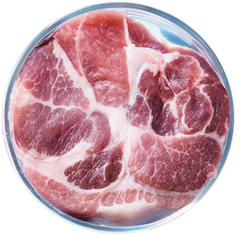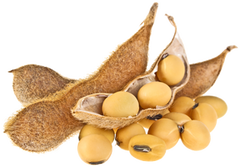Panel discussion on...
Alternative proteins
Flexitarians, subsidies, and the future of alternative proteins
I teach an intermediate undergraduate course at Northwestern University, called “Food and Society”. As a part of my curriculum, I use my class as a focus group and every week I ask them about the food and their relationship to it. In our last week of classes last year, I asked in the survey if any of them would eat cultivated meat. 92% of them said yes. I asked: why would you eat something that is made in a lab and not nature? The most surprising answer was ‘covid’, and not the way you might think. During covid the divide of pro science and anti-science regarding vaccination made many of them take a pro science stand, and a part of this stance is to trust in scientists that develop more sustainable ways to make food. In fact, for them this is a positive, not a negative, and the industry should capitalize on that when addressing consumer concerns.
This might be anecdotal, but it is indicative of a shift among young consumers. This shift is a result of decades of efforts by the vegan lifestyle movement to expand the alternative protein audience past animal rights activists, a goal they have partially already accomplished by creating a new consumer identity that is open to alternative proteins without committing to the moral stance behind veganism. This identity, which I argue is the future consumer of alternative proteins is the flexitarian.
The flexitarian is an interesting consumer identity as it was cultivated as a part of the plant-based market expansion and is hard to track in terms of lifestyle purchases. They do eat meat, but less than they used to for reasons of sustainability concerns or health. What makes them important consumers for alternative proteins is not the reduction part of the identity alone, but rather the flexible part – they are open to new sources of protein, to new flavors and textures, making them the go to initial consumer for a niche industry such as alternative proteins. If the price is not too high, and benefits for them and others are clear, these consumers will try the products at least a few times when they hit the market.
Not only are flexitarians willing to experiment, but they also form the majority of the future consumer cohorts. Millennials and Gen Z, educated, with well earning jobs that tend to cluster in urban centers, soon they will make up the most important consumer group in the US. For instance, 63.2% millennials and 60.2% of Gen Z agree or strongly agree that they can make a change in the world through their choices and actions, according to Euromonitor International’s voice of the consumer 2022 Survey. These consumers provide the industry with a solution to their concerns, if there are clear environmental benefits, they will buy and use the products often, it is up to the industry to emphasize these benefits to consumers.
Beyond a consumer base, what can be done to promote this niche market through regulation? Over the past decade, alternative proteins were a tale of two industries. On the one hand, plant-based proteins, which went through the GRAS process of approval and thus, streamlined into the market, expanding at different rates with the FDA not actively involved in restricting regulation against this industry, staying away from labeling restrictions. Due to this regulatory position, plant-based products increasingly came to market, industry leaders such as Nestle’ and Unilever have entered the space and expanding plant based dairy companies acquired by dairy leaders such as Danone. This course of action with minimal regulation regarding marketing to consumers, had proved to promote the expansion of the plant based alternative protein segment. Between 2008-2022, that segment had saw 10.5% growth year on year according to Euromonitor International plant based dairy US country report.
For cultivated proteins, and precision fermentation, the story is different. Unlike plant-based foods, which can easily get approval through the GRAS process, cultivated protein companies need USDA and FDA approval for their production process, to make sure they are safe to consume. Due to the complexity of the technology, as well as the rapid pace of innovation, regulation lags, as several companies already produce and sell such proteins outside of the US, in East Asian emerging markets, like the Eat Just cultivated chicken nugget, which is already consumed in Singapore. For precision fermentation, a USDA study was needed, which cost about 250,000$ for Perfect Day foods, and is currently mentioned by every company in this space that is looking to streamline the approval of their products by the USDA.
Currently, approval processes require intensive capital and a long wait leading to many innovative startups being acquired while they wait for approval. This means less competition once this industry gets to market, with only the largest companies surviving the pre-market period, leading to concentration in this niche industry. While at this stage, there is little that can be changed in regulation, there can be things the regulators can do to advance this industry.
First, to not intervene in consumer marketing, same as was done for plant-based alternatives. Consumers can read packages and therefore can understand the source of the product. Second, work with the companies that want to enter the market in finding proper definitions for the production process, as plant based and cultivated are both considered “protein alternatives” but are distinctly difference in ingredients and process of production, as well as in perceived benefits to sustainability. Finding a term to distinguish the two in the eyes of consumers and legislators will be critical for this market expansion. Lastly, subsidies are needed if governments wish for alternative proteins to expand. With current subsidies for animal agriculture and feed production, to reach price equity there must be equity in subsidies, otherwise one industry is disadvantaged in perpetuity. Subsidies for research, production and even farming subsidies for the ingredients that feed the industry R&D can level the playing field, leading to an expansion of this market.
Panelists
References and notes
- COMMISSION IMPLEMENTING REGULATION (EU) 2021/882; (EU) 2022/169; (EU) 2022/188; (EU) 2023/5; (EU) 2023/58; and (EU) 2021/1975
- https://doi.org/10.1016/j.foodchem.2019.126022
- https://doi.org/10.1016/j.cofs.2021.08.003
- https://doi.org/10.1016/j.tifs.2022.02.021
- doi: 10.3390/ijerph17072427
- https://doi.org/10.1016/j.appet.2021.105832
- https://library.wur.nl/WebQuery/wurpubs/fulltext/258042



















